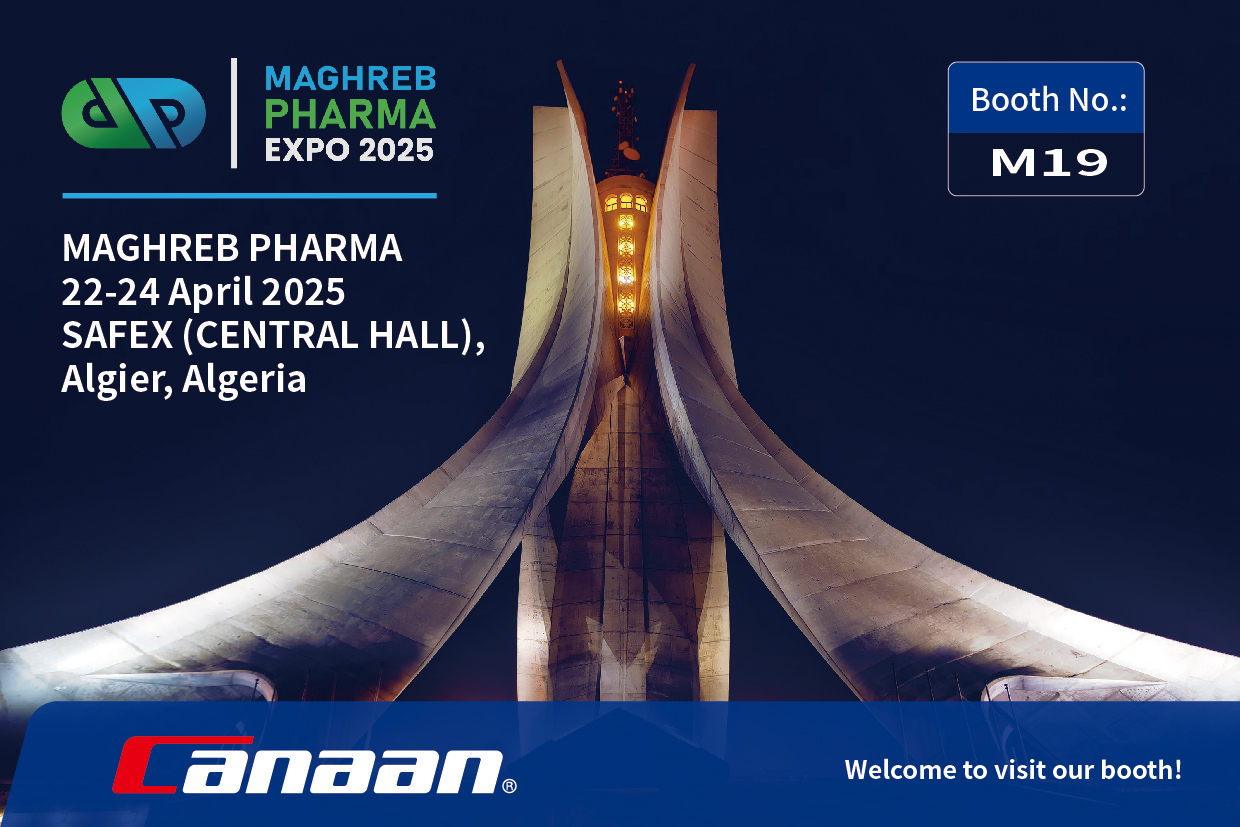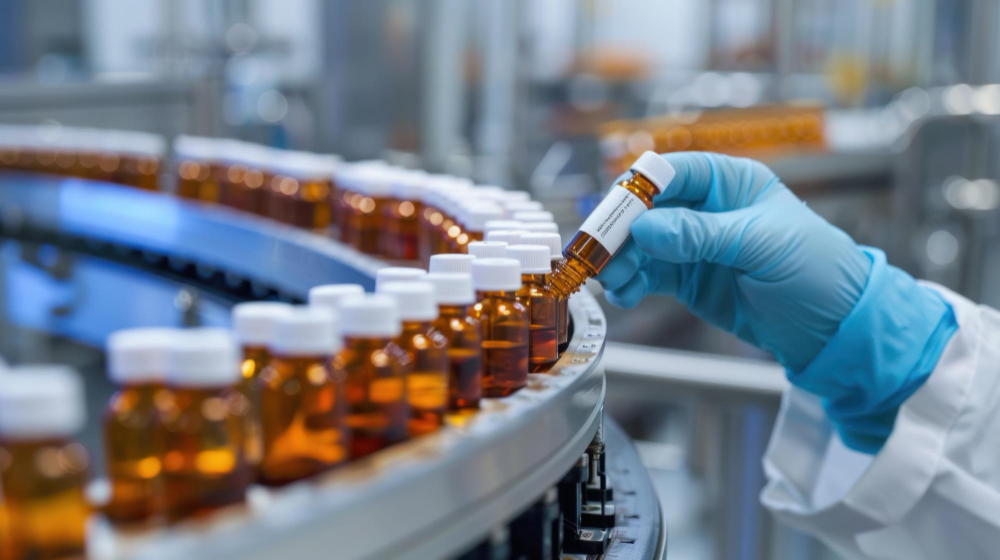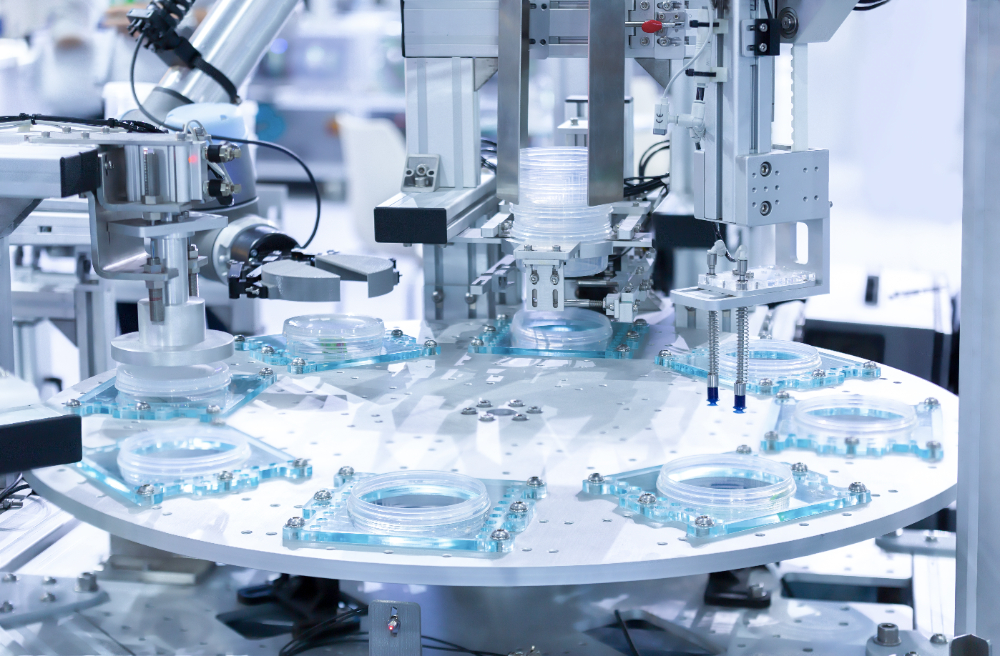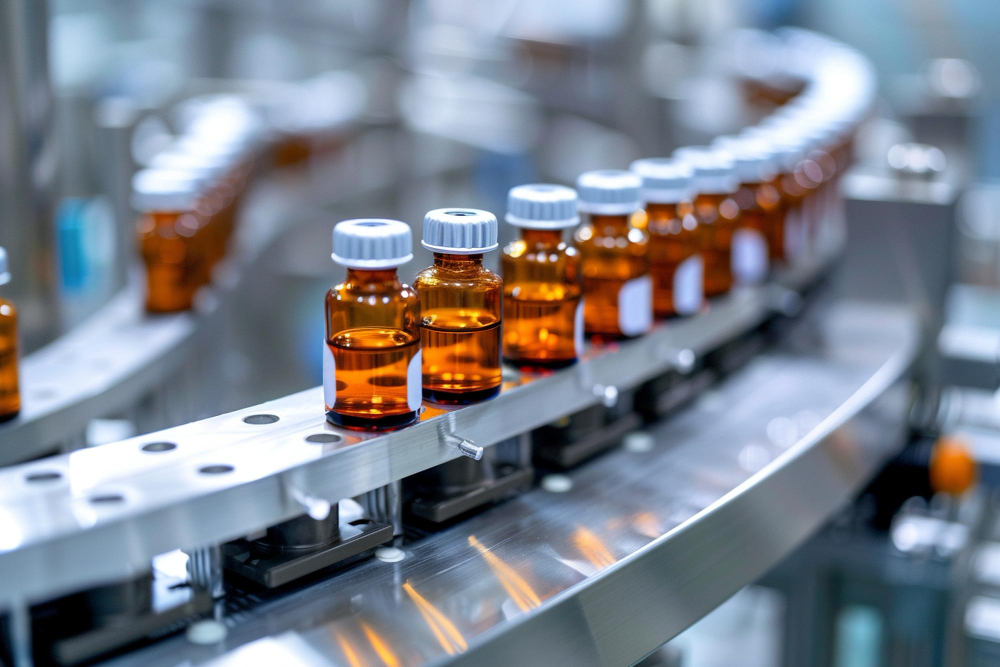
Granülasyon, tozların granüllere dönüştürülerek akışkanlığı ve sıkıştırılabilirliği iyileştiren ve homojen dozaj formları sağlayan, ilaç endüstrisinde kritik bir işlemdir.
Granülasyon için iki ana yöntem vardır: ıslak granülasyon Ve kuru granülasyon. Bu iki yöntem arasındaki farkları anlamak, üretim için en uygun olanı seçmek açısından önemlidir.

Islak granülasyon nedir? Islak granülasyon özellikle ilaç endüstrisinde granül üretmek için en yaygın kullanılan yöntemdir. Yapışmayı artırmak için toz parçacıklarına sıvı bir bağlayıcı eklenmesini içerir ve daha düzgün granüller oluşturmalarını sağlar. Bağlayıcı çözelti, malzemenin neme duyarlılığına bağlı olarak su veya etanol veya izopropanol gibi bir çözücü olabilir.

Bu işlemde, bir hava akımı toz parçacıklarını akışkanlaştırırken, sıvı bağlayıcı akışkanlaştırılmış yatağa püskürtülür. Parçacıklar hava akımında çalkalanırken bağlanır ve kurutma aynı sistem içinde gerçekleşir, bu da onu büyük ölçekli üretim için oldukça verimli hale getirir.

Karıştırıcı bıçaklarının yoğun çalkalaması, granülleri hızla oluşturur ve bunlar daha sonra kurutulur ve gerekli boyuta öğütülür. Bu yöntem, yoğun granüller üretmek için idealdir ve genellikle ürün daha sağlam bir formülasyon gerektirdiğinde kullanılır.

Nedir? kuru granülasyon? Kuru granülasyon, nemsiz bir granülasyon işlemidir ve bu da onu neme duyarlı veya ısıya duyarlı malzemeler için ideal hale getirir. Bu yöntem, tozu slug veya tabaka adı verilen büyük, katı parçalara sıkıştırmak için mekanik kuvvetler kullanır ve bunlar daha sonra daha küçük granüllere öğütülür.
Kuru granülasyon Formülün aktif bileşenlerinin neme veya ısıya maruz kalmaya dayanamadığı durumlarda sıklıkla tercih edilir ve ıslak granülasyona göre daha basit, daha enerji tasarruflu bir alternatif sunar.
Silindir sıkıştırma, bağlanma için neme ihtiyaç duymayan malzemeler için idealdir, homojen ve tutarlı parçacık boyutu dağılımı sağlar.
Islak ve kuru granülasyon arasındaki en önemli fark, sıvı bağlayıcıların kullanılmasıdır. Islak granülasyon, partikül yapışmasını desteklemek için sıvı bir çözeltinin eklenmesini gerektirirken, kuru granülasyon, herhangi bir sıvıya ihtiyaç duymadan aynı etkiyi elde etmek için sıkıştırma gibi mekanik kuvvetler kullanır.
Islak granülasyon, özellikle bağlanması zor veya zayıf akış özelliklerine sahip olan, geliştirilmiş sıkıştırılabilirlikten faydalanan malzemeler için tipik olarak kullanılır. Ayrıca, granüller içinde hassas dağıtım gerektiren düşük dozlu API'lere sahip formülasyonlar için daha etkilidir. Öte yandan, kuru granülasyon, sıvıların eklenmesinin ürünün kararlılığını tehlikeye atabileceği neme veya ısıya duyarlı malzemeler için idealdir.
Islak granülasyon, karıştırma, kurutma ve öğütme gibi ek adımlar içerir ve bu da onu kuru granülasyona kıyasla daha fazla emek yoğun ve zaman alıcı hale getirebilir. Kuru granülasyon ise aksine, kurutma aşamasını atlayarak süreci basitleştirir ve özellikle daha küçük üretim serilerinde daha hızlı ve daha verimli hale getirir. Ancak, silindir sıkıştırıcılar Kuru granülasyonda kullanılan malzemeler, sıkıştırma için gerekli basıncın uygulanması için özel ekipmanlar gerektirir.
Islak granülasyon genellikle akışkan yataklı granülatörler, yüksek kesmeli karıştırıcılar veya hem granülasyon hem de kurutma yapabilen diğer ekipmanları gerektirir. Kuru granülasyon, özellikle silindir sıkıştırıcılar kullanıldığında, daha az ekipman parçası içerir ancak uygun granül oluşumunu sağlamak için basınç ve besleme hızlarının hassas bir şekilde kontrol edilmesini gerektirir.
| Bakış açısı | Islak Granülasyon | Kuru Granülasyon |
| Sıvıların Kullanımı | Sıvı bir bağlayıcıya (örneğin su, etanol) ihtiyaç duyar | Sıvı bağlayıcı yok; mekanik basınç kullanılıyor |
| Başvuru | Akışkanlığı ve sıkıştırılabilirliği zayıf olan tozlar için kullanılır | Isıya/neme duyarlı malzemeler için idealdir |
| İşlem Karmaşıklığı | Kurutma gibi ek adımlarla daha karmaşık | Daha basit bir işlem, kurutma adımı gerekmez |
| Teçhizat | Akışkan yataklı granülatörler, yüksek kesmeli karıştırıcılar gibi ekipmanlar gerektirir | Silindir sıkıştırıcılar gibi ekipmanlar kullanır |
| Isı/Nem Duyarlı Malzemeler İçin Uygunluk | Isıya/neme duyarlı malzemeler için uygun değildir | Isıya ve neme duyarlı malzemeler için en uygunudur |
Islak ve kuru granülasyon arasında seçim yapmak, işlenen malzemenin özellikleri, nihai ürünün istenen özellikleri ve mevcut üretim kaynakları gibi çeşitli faktörlere bağlıdır. Her yöntem, belirli formülasyon türleri için uygun hale getiren belirgin avantajlar sunar:
Kuru granülasyon için silindirli sıkıştırıcı veya ıslak granülasyon için akışkan yataklı granülatör kullanılması fark etmeksizin, her iki yöntem de yüksek kaliteli farmasötik ürünlerin üretiminde önemli rol oynar.
Bize Ulaşın Bugün, bizim nasıl olduğumuz hakkında daha fazla bilgi edinmek için silindir sıkıştırıcı çözümler Ve granülasyon uzmanlığı üretim sürecinizi geliştirebilir.




İlaç ürünleri üretmek her zaman ciddiye alınmalıdır. Yani, her süreç en katı ve en yüksek standartları takip etmelidir. Üreticilerin bir EPC yüklenicisi tutmayı tercih etmesinin nedeni tam da budur. EPC sözleşmeleri kapsamında çalışan yükleniciler, ne olursa olsun sonuçların en iyi kalitede olmasını sağlayacak ve […]

İlaç üretiminde EPC sözleşmelerinin önemini keşfedin. EPC'nin nasıl çalıştığını, faydalarını ve bir EPC yüklenicisi seçmenin Canaan'ın sektör lideri ekipmanlarıyla proje başarısını neden garanti edebileceğini öğrenin.

SCADA ve PLC'nin ilaç endüstrisinde otomasyonu nasıl iyileştirdiğini keşfedin. Rollerini, faydalarını ve Canaan'ın gelişmiş teknolojisinin verimliliği ve güvenliği nasıl artırdığını öğrenin.